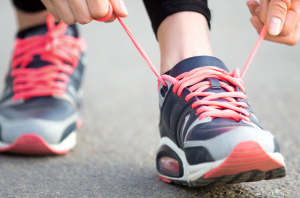Common Running Injuries and How to Avoid Them
While others may think it’s insane that anyone enjoys jogging, those who fall in love with it frequently feel like they can’t get enough. Many runners, on the other hand, describe a love-hate relationship. That’s because, while running has numerous mental and physical health benefits, it’s also physically demanding. It’s difficult to strike a balance that allows you to reap the benefits of running while lowering your risk of injury.
Typical runner’s injuries
There are a variety of injuries that are frequent among runners, and knowing a little about them might be beneficial.
Shin splints are a type of pain that occurs along the shin bone.
Runner’s knee is a catch-all term for pain in the front of the knee.
Plantar fasciitis is a condition in which the plantar fascia, a band of tissue that links the toes to the heel bone, becomes inflamed.
Achilles tendinitis is a condition in which the Achilles tendon, which links the heel to the back of the leg, becomes inflamed.
Stress fractures are microscopic fissures in the bone that cause pain.
Injury prevention during running
Injuries can be excruciatingly painful and even incapacitating, forcing runners to sit out for weeks or months. That is why it is critical to take precautionary steps. While some aches and pains are unavoidable, injuries can frequently be prevented with proper preparation and safeguards. Here are seven preventative measures to consider:
1) Begin carefully — Overuse injuries can happen when you start a new running regimen or increase the intensity of an existing one. Start slowly and gradually increase your speed and distance to avoid doing too much too soon. Also, pay attention to your body. Discomfort is an indication that you should ease up on your program until your body gets more accustomed to it.

Common Running Injuries and How to Avoid Them
2) Seek expert help – If you’re a beginner, seek advice from a professional. A personal trainer can offer helpful advice and get you started on the right foot with proper running technique and regimen.

Common Running Injuries and How to Avoid Them
3) Invest in high-quality running shoes — You can scrimp on some sportswear, but never on running shoes. The first line of protection against injuries is properly fitted shoes with adequate shock absorbers. A gait analysis is something that some shoe stores can undertake. This is merely a review of your running style. Your gait can help you figure out which shoe brands and styles are best for you. After 300-500 kilometers, you should replace your shoes.

Common Running Injuries and How to Avoid Them
4) Use Running Insoles – Good insoles can help your running shoes perform better. For added cushioning and support, try IDEASTEP® Performance Sized to Fit Running Insoles. Proper arch support prevents overpronation and keeps your foot supported comfortably throughout your running stride. If you don’t have enough shock absorption and cushioning, your body stiffen up subconsciously, ready for the next ground strike to sap your vitality. Using insoles for shock absorption and cushioning allows the runner to run more efficiently and cover more distance.

Common Running Injuries and How to Avoid Them
5) Stretch and warm up – Start with a brisk walk or a short jog to warm up. Stretch for several minutes after your muscles have warmed up before running. After you’ve finished, stretch for a few minutes more before cooling off.

Common Running Injuries and How to Avoid Them
6) Vary your workouts — While it may be appealing, running every day can lead to overuse issues. Alternate between running and other hobbies such as swimming and cycling. Strength training should be incorporated into your workout program to help you grow supporting muscles.

Common Running Injuries and How to Avoid Them
7) Be cautious — Falls and twisting on uneven ground might result in injuries. When possible, stay on even, smooth running pathways. Trail running has grown in popularity, but it may be a mixed bag. Some pathways are softer and porous than pavement, making them easier on the joints. Some pathways, however, are uneven, with protruding rocks and trees, increasing the risk of falling and twisting ankles and knees.

Common Running Injuries and How to Avoid Them
Many people can enjoy the advantages of running while avoiding typical injuries. You, too, can love running and reap the benefits with proper planning and care. Never try to push through discomfort. Consult your doctor if you have persistent pain that stops you from running.
